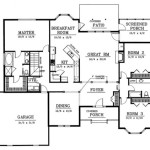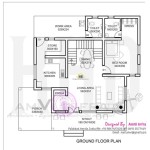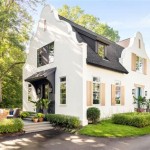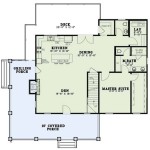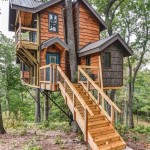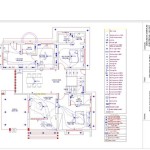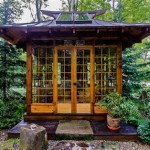Colorado Style Home Plans
Colorado evokes images of majestic mountains, sprawling plains, and vibrant cities. These diverse landscapes influence the state's unique architectural styles, reflected in Colorado home plans. These plans blend functionality with aesthetics, prioritizing natural light, outdoor living spaces, and materials that complement the surrounding environment. Whether seeking a rustic mountain cabin or a contemporary urban dwelling, Colorado style offers a range of options to suit diverse preferences and lifestyles.
Key Features of Colorado Style Homes:
- Emphasis on Natural Light
- Integration of Outdoor Living Spaces
- Use of Natural Materials
One of the defining features of Colorado style home plans is the emphasis on maximizing natural light. Large windows, strategically placed skylights, and open floor plans allow sunlight to flood interior spaces, creating a bright and airy atmosphere. This connection to the outdoors is further enhanced by the seamless integration of indoor and outdoor living areas. Patios, decks, and balconies become extensions of the home, providing spaces for relaxation, entertainment, and enjoying the stunning Colorado scenery.
Popular Materials in Colorado Homes:
- Stone
- Wood
- Stucco
Natural materials play a crucial role in Colorado home design. Stone, wood, and stucco are commonly used exterior finishes, blending seamlessly with the natural environment. These materials not only enhance the aesthetic appeal of the home but also offer durability and weather resistance, essential for withstanding Colorado's variable climate. Stone fireplaces, exposed wood beams, and rustic wood siding are often incorporated into interior spaces, adding warmth and character.
Common Architectural Styles in Colorado:
- Mountain Rustic
- Ranch
- Contemporary
Several architectural styles are prevalent in Colorado, each reflecting the state's diverse landscapes and historical influences. Mountain Rustic style draws inspiration from traditional log cabins, featuring heavy timber framing, gabled roofs, and natural stone accents. Ranch style homes, characterized by their single-story layouts, low-pitched roofs, and open floor plans, are well-suited to Colorado's sprawling plains. Contemporary designs, with their clean lines, large windows, and minimalist aesthetics, offer a modern interpretation of Colorado living, often incorporating sustainable building practices and energy-efficient features.
Considerations for Choosing a Colorado Style Home Plan:
- Lot Size and Topography
- Lifestyle and Needs
- Budget
When selecting a Colorado style home plan, several factors should be considered. The size and topography of the lot will influence the design and footprint of the home. Steep slopes may require specific foundation designs, while larger lots offer more flexibility in terms of layout and outdoor living spaces. Lifestyle and individual needs are also important considerations. Families with children may prioritize spacious bedrooms and play areas, while those who enjoy entertaining may opt for open-concept living spaces and expansive outdoor patios.
Benefits of Open Floor Plans:
- Enhanced Natural Light
- Improved Air Circulation
- Ideal for Entertaining
Open floor plans are a popular feature in Colorado style homes, offering numerous benefits. They maximize natural light penetration, creating a brighter and more inviting atmosphere. Improved air circulation is another advantage, promoting a healthier indoor environment. Open floor plans are also ideal for entertaining, allowing for seamless flow between living, dining, and kitchen areas. This creates a sense of spaciousness and encourages interaction among family members and guests.
Importance of Energy Efficiency:
- Reduced Utility Costs
- Environmental Sustainability
- Increased Comfort
Energy efficiency is a key consideration in Colorado home design. Given the state's variable climate, incorporating energy-efficient features can significantly reduce utility costs and minimize environmental impact. High-performance windows, insulation, and energy-efficient appliances contribute to a more comfortable and sustainable living environment. Passive solar design principles, such as strategically placed windows and overhangs, can further enhance energy efficiency by maximizing solar gain in the winter and minimizing heat gain in the summer.
Adapting Colorado Style to Different Regions:
- Material Selection
- Climate Considerations
- Architectural Adaptations
While Colorado style home plans are rooted in the state's unique landscape and climate, the core design principles can be adapted to other regions. Careful consideration should be given to material selection, ensuring suitability for the local climate and environment. Architectural adaptations may be necessary to address specific regional needs, such as incorporating hurricane-resistant features in coastal areas or designing for extreme temperatures in desert climates. By thoughtfully adapting key elements, the essence of Colorado style – its connection to nature, emphasis on natural light, and use of natural materials – can be incorporated into homes across diverse geographical locations.

Sopris Homes Colorado Front Range Luxury Communities House Plans Dream Design

House Plan 2 Bedrooms 1 Bathrooms 2154 Drummond Plans

Allpine Colorado Log Homes Home Floor Plans Lumber Co

Plan 95054rw Unique And Grand House Plans Dream Blueprints

House Plan 2 Bedrooms 1 Bathrooms 2154 Drummond Plans

New Castle Model Sopris Homes Boulder Colorado Home Design Floor Plans Barn Style House

Pinyon Ridge Ii House Plan Ranch

Luxury Lakehouse 9046 4 Bedrooms And 5 Baths The House Designers

The Colorado Greater Living Architecture

New Home Builder Colorado Springs Floor Plans
Related Posts

